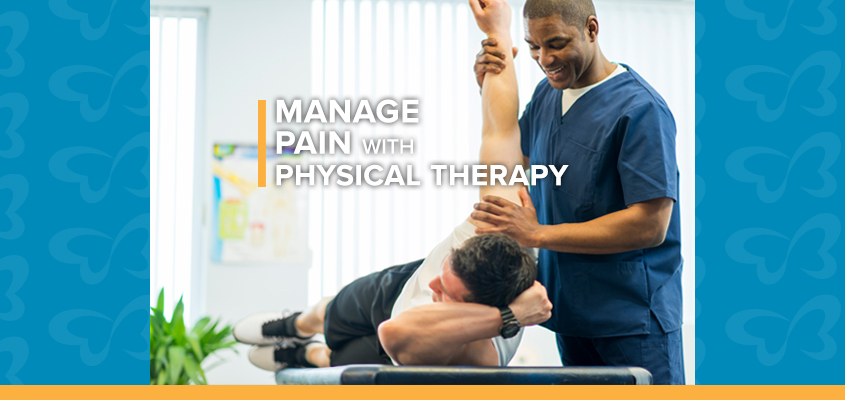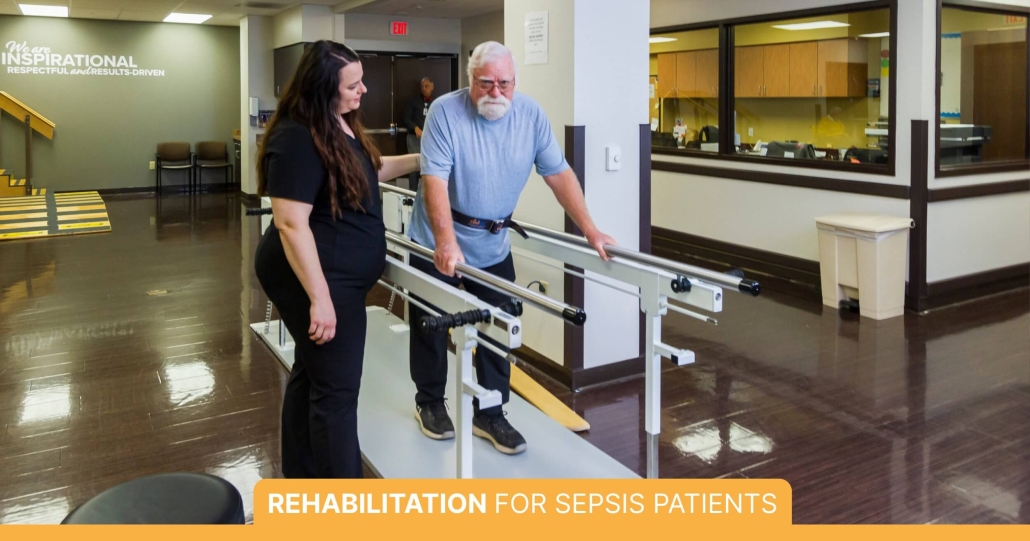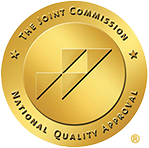
Manage Pain with Physical Therapy
Last year, more than 100,000 people died due to opioid overdoses. While physician-prescribed opioids may be appropriate in certain cases, the Centers for Disease Control and Prevention recommends non-opioid approaches for pain management, including physical therapy.
Physical therapy can help manage pain without the risks associated with opioid use, such as depression, substance use disorder, overdose, and withdrawal symptoms when usage stops.
Physical therapists work with patients to create tailored treatment plans based on individual needs, challenges, and goals, as well as educate patients and help them set realistic recovery expectations. The goal is to lessen pain and restore activity to the highest possible levels. Treatments target both symptoms and root causes of pain.
In a physical therapy session, you may perform:
- Low-impact, aerobic training
- Strengthening exercises
- Pain relief exercises
- Stretching
- Heat and ice packs
- Massage
- Transcutaneous electrical nerve stimulation (TENS) and ultrasound
Along with physical therapy, other alternatives for treating and controlling pain include:
- Yoga classes
- Mind-body therapies to help control stress and anxiety
- Acupuncture
- Massage therapy
- Medical interventions such as Botox injections or transcutaneous electrical nerve stimulation (TENS).
Recent Blogs/News
We invite you to view our recent blogs and news. For your convenience, our latest Post is shown below!
 https://clearskyhealth.com/riorancho/wp-content/uploads/sites/2/2025/08/clearsky-blog-rehab-for-sepsis-patients-2.jpg
1313
2500
elv2
https://clearskyhealth.com/riorancho/wp-content/uploads/sites/2/2020/09/Logo.png
elv22025-08-13 05:39:302025-08-15 15:50:00Rehabilitation for Sepsis Patients
https://clearskyhealth.com/riorancho/wp-content/uploads/sites/2/2025/08/clearsky-blog-rehab-for-sepsis-patients-2.jpg
1313
2500
elv2
https://clearskyhealth.com/riorancho/wp-content/uploads/sites/2/2020/09/Logo.png
elv22025-08-13 05:39:302025-08-15 15:50:00Rehabilitation for Sepsis Patients https://clearskyhealth.com/riorancho/wp-content/uploads/sites/2/2025/07/clearsky-blog-traveling-with-a-disability-2.jpg
985
1875
elv2
https://clearskyhealth.com/riorancho/wp-content/uploads/sites/2/2020/09/Logo.png
elv22025-07-17 15:07:252025-07-18 15:25:10Traveling with a Disability
https://clearskyhealth.com/riorancho/wp-content/uploads/sites/2/2025/07/clearsky-blog-traveling-with-a-disability-2.jpg
985
1875
elv2
https://clearskyhealth.com/riorancho/wp-content/uploads/sites/2/2020/09/Logo.png
elv22025-07-17 15:07:252025-07-18 15:25:10Traveling with a Disability





